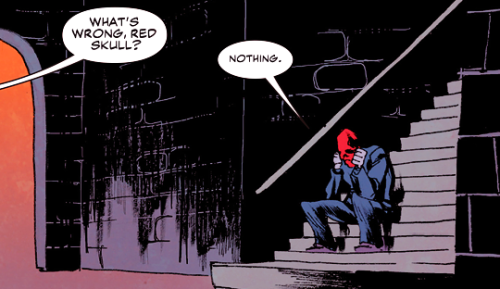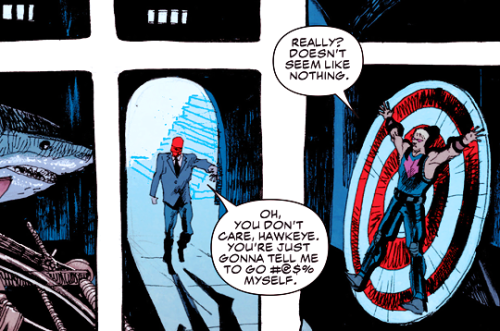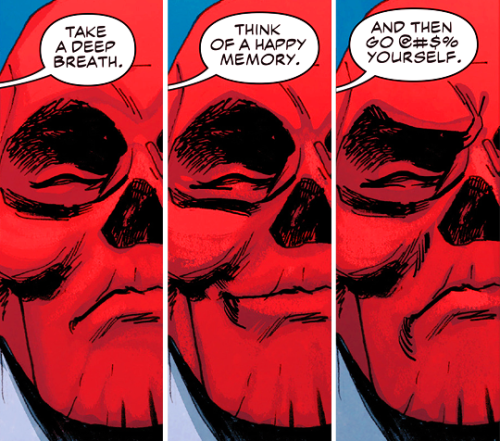3. Bargaining




3. Bargaining
More Posts from Lostinthewanderingblue and Others
i can’t talk shit about the pirates of the caribbean films as if elizabeth swann becoming pirate king didn’t hand my entire ass to me and make me the gay i am today

🤍happy birthday my beloved vigilante who suffered more than jesus
hope you're doing well, eating cake and definitely not lying in some dumpster with fifteen fractures 🙏🏻🙏🏻


shares are appreciated!
Insta: kameyasart
How the Winter Soldier shot Nick Fury
I’ve been wanting to make a post about this for a while, even though I might be the only person invested in this, but anyway, here we go. I’ve seen mentioned several times, in posts about the movie and in fics that the Winter Soldier shot Nick Fury through the window of Steve’s apartment, and every time it makes me groan in frustration because no.

The Winter Soldier didn’t shoot Fury through a window, he shot him through a wall, and I don’t know about you, but it seems like a pretty big difference to me.

(bullet hole in the wall!!)
When I saw the scene the first time, I remember thinking holy shit??? that’s crazy, and for me that’s when the Winter Soldier really became a real, terrifyingly good assassin, that’s when his image as a serious threat solidified.
Read about the blogger getting carried away under the read more.
Read More
I love that "avengers level threats" are peters side quests. hes like yeah yeah thanos chitauri whatever. have you seen the 6 cackling freaks that have literally unionized against me as an individual


I'd love to say that this is the dumbest thing I've ever made, but we both know that's a lie
Vision: Mr. Stark always accuses me of having a favorite human.
Vision: That’s not true. I love Wanda and Not-Wandas equally.
Bucky in the Army, part I
When a draftee got his notice to report, he was expected to show up at his local draft board on a specified date. http://arcweb.sos.state.or.us/pages/exhibits/ww2/services/pdf/induct5.pdf (This links to a .pdf of a helpful pamphlet designed by Oregon officials for potential draftees, and outlines the induction process, as well as covering common questions.) Once there, he would receive a physical examination and fill out some paperwork. If he passed the physical, and couldn’t (or didn’t) claim a deferral on the basis of one of the few exempt categories, he was sent home with a grace period of about 21 days to set his personal affairs in order—arrange for payments of personal financial obligations, set up a power of attorney, and similar tasks. At the end of those 21 days (it might be a little longer, depending on delays in the training system, but that was the standard), he was expected to report to his assigned Army Reception Center (or Naval Training Station, but Bucky is not a Navy man, so we’ll ignore the Navy from now on out). At the Army Reception Station, draftees spent up to 7 days undergoing testing, were issued uniforms, were barbered to suit the army’s standards, started the necessary vaccinations, and were assigned to the army posts where they would undergo their basic training. At this point I’m going to break into the schedule to talk about how the US Army was organized in World War II. A numbering system was set up for https://en.wikipedia.org/wiki/Divisions_of_the_United_States_Army army divisions (the typical US Army division now averages 17,000-21,00 soldiers, and is commanded by a major general, for those not experienced military details) in 1917, during World War I. Numbers 1-25 were Regular Army divisions—the Regular Amy was the US peacetime army, which was quite small at that time. Numbers 26 through 45 were for National Guard units; and Numbers 46 through 106 were the Army of the United States (with some exceptions, like the 82nd and 101st Airborne, which became Regular Army divisions when they switched from straight infantry to airborne infantry.) The National Guard units already had the necessary organizational system in place (although many officers weren’t up to their wartime jobs and were replaced later), but to staff all those new divisions, the army took a cadre from an existing division—usually around 1300 men and officers. This core group would start training as the recruits were collected and began basic training. The Army also started pulling the necessary officers from officers in the existing Reserves (my father was one of these, as he did 4 years of ROTC to get through college in the Great Depression), ROTC programs, the Army’s own Officer Training Corps, and officers awaiting reassignment for one reason or another. At this point, the division would be formally activated, so it could receive its new recruits, and this expansion would continue until the division reached full strength. The entire time the US was fighting in World War II, it was also continuously training new soldiers, and for much of the time it was forming new divisions. http://www.historyshotsinfoart.com/USArmy/backstory.cfm This is what training involved for these new soldiers: 17 weeks of basic and advanced training (Basic is where they learn to be soldiers; Advanced training is where they learn their particular specialty—artillery, infantry, armored, or the support units and special skills.) 13 weeks of unit training (This is where they learn to work as a group.) 14 weeks of combined arms training and large-scale exercises (These would be division level exercises.) 8 weeks of final training (They have now been training 52 weeks—after the first 17 weeks all of it has been in the same unit, with the same people; they will have become very attached to each other, which is important in keeping an army working well.) At this point, they’d do some more training—multi-division exercises. The Army’s first big operation outside of the Pacific Theater was Operation Torch—in invasion of North Africa. Not all the troops involved had gone through this full regime of training, and the lack showed. The troops that invaded Sicily and Italy had the chance for more training. After this, the division traveled to a Port of Embarkation, and went overseas. If it was possible, they trained some more, usually for the specific mission they would undertake. So how long has Bucky been in the Army? If he was called up in early 1942, possibly while waiting for his enlistment paperwork to be finalized, he probably went into training in late February or March—which would mean embarkation leave (this would be about 10-15 days, depending on the travel involved—no flying, so they went everywhere by train, pretty much) in May or a little later would not be unreasonable. This fits pretty well with CA:TFA. So how did Bucky get to be a sergeant? Nowadays, the army has training programs for its noncommissioned officers, and a soldier has to have a certain amount of time in the service, and a good record to get into these programs. In World War II, they were still operating on the old-school principle of promoting sergeants from inside a unit, and they used a variety of ways to select them. One would be pre-enlistment skills and training—if a man was able to type, handle bookkeeping and other clerical tasks, he would be in a position to help handle the amazing amount of paperwork running an army unit requires. Another important factor might be how well he’d absorbed basic military skills, and how well he did in helping his fellow-soldiers along. Those who were natural leaders, as the phrase goes, might also be promising candidates. Ideally, you wanted someone who combined all of these to some degree, and who was comfortable with military discipline and methods. We don’t know a whole lot about what Bucky did between the time he finished school and went to war, but in those 6 or 7 years he may well have acquired skills the Army saw as useful in an NCO. So at some point between starting his unit training and going on his embarkation leave, the US Army saw they had a useful man in James Buchanan Barnes, and made him a sergeant, responsible for the training and lives of his fellow-soldiers, and for making sure the officers over him have the help they need to get things done.
(Need I say that, like everyone else, I have headcanon ideas about what Bucky did between the time he left school and joining the army? For later posts…)
Next post I’ll give some details about what Bucky would have gotten into once he got on board ship to head out to the shooting part of the war. Books and such may be recommended. *Link goes to a .pdf file
Also, I really hate Tumblr’s insistence on saving me from the burden of hand-inserting a link. Especially since their system works so well on a tablet.
Agatha mentoring Billy is going to be like "Yeah I'm a super VILLAIN and you want to be a super HERO so I'm just going to teach you what I know and hopefully it translates over somehow. Anyway, lesson one: Always have a cloak or dress or something to flow behind you dramatically."
See, people who kidnapped Spider-man typically ran up against a problem, eventually- how do you keep him down?
The thing that far too many people know about Spider-man is that he heals fast. Like, really fast. Videos of him taking hits that kill a normal person are everywhere on the internet. Even when he gets hurt, hurt bad, he’s back in the suit within a week. He can take a hit and he can hit back. His well-documented super-strength quickly rends most restraints to shattered pieces. So how do you keep him off his game? How do you keep him?
There’s one thing that everyone needs- mutant, enhanced, basic bitch human- and that’s sleep.




-
 yes2days reblogged this · 4 weeks ago
yes2days reblogged this · 4 weeks ago -
 racountuer liked this · 4 weeks ago
racountuer liked this · 4 weeks ago -
 ratataaaa reblogged this · 1 month ago
ratataaaa reblogged this · 1 month ago -
 burbankhays liked this · 1 month ago
burbankhays liked this · 1 month ago -
 letskzuniverse reblogged this · 2 months ago
letskzuniverse reblogged this · 2 months ago -
 sonia-itismyname liked this · 2 months ago
sonia-itismyname liked this · 2 months ago -
 ughdontbeboring reblogged this · 2 months ago
ughdontbeboring reblogged this · 2 months ago -
 foxfootunderscore liked this · 2 months ago
foxfootunderscore liked this · 2 months ago -
 fishyandclintbarton reblogged this · 2 months ago
fishyandclintbarton reblogged this · 2 months ago -
 ghost-in-a-pinata reblogged this · 2 months ago
ghost-in-a-pinata reblogged this · 2 months ago -
 bite-sized-bucky liked this · 2 months ago
bite-sized-bucky liked this · 2 months ago -
 bombusterrestris reblogged this · 2 months ago
bombusterrestris reblogged this · 2 months ago -
 bluedenebii liked this · 3 months ago
bluedenebii liked this · 3 months ago -
 chaossmagic reblogged this · 3 months ago
chaossmagic reblogged this · 3 months ago -
 dat-crazy-fangirl liked this · 3 months ago
dat-crazy-fangirl liked this · 3 months ago -
 owlintheemptiness liked this · 3 months ago
owlintheemptiness liked this · 3 months ago -
 bellamuerte-13 liked this · 3 months ago
bellamuerte-13 liked this · 3 months ago -
 luka-elizabeth-25 liked this · 3 months ago
luka-elizabeth-25 liked this · 3 months ago -
 maxtheguide liked this · 3 months ago
maxtheguide liked this · 3 months ago -
 weird-an reblogged this · 3 months ago
weird-an reblogged this · 3 months ago -
 leihaddock reblogged this · 3 months ago
leihaddock reblogged this · 3 months ago -
 ceruleansunkissed reblogged this · 3 months ago
ceruleansunkissed reblogged this · 3 months ago -
 lavenderbuckyy reblogged this · 3 months ago
lavenderbuckyy reblogged this · 3 months ago -
 ace-in-reserve reblogged this · 3 months ago
ace-in-reserve reblogged this · 3 months ago -
 justamusedmusings liked this · 3 months ago
justamusedmusings liked this · 3 months ago -
 lillianowitch liked this · 3 months ago
lillianowitch liked this · 3 months ago -
 bobthetitanisback reblogged this · 3 months ago
bobthetitanisback reblogged this · 3 months ago -
 bobthetitanisback liked this · 3 months ago
bobthetitanisback liked this · 3 months ago -
 my-thyla-my-captain liked this · 3 months ago
my-thyla-my-captain liked this · 3 months ago -
 glebuloidcannottumble liked this · 3 months ago
glebuloidcannottumble liked this · 3 months ago -
 amarriageoftrueminds reblogged this · 3 months ago
amarriageoftrueminds reblogged this · 3 months ago -
 charlieflowers liked this · 3 months ago
charlieflowers liked this · 3 months ago -
 transstuckywriter reblogged this · 3 months ago
transstuckywriter reblogged this · 3 months ago -
 stuckydrewx reblogged this · 3 months ago
stuckydrewx reblogged this · 3 months ago -
 mrhorselover28 liked this · 3 months ago
mrhorselover28 liked this · 3 months ago -
 faithinthefuture14 liked this · 3 months ago
faithinthefuture14 liked this · 3 months ago -
 sentowritesstuff reblogged this · 3 months ago
sentowritesstuff reblogged this · 3 months ago -
 sentowritesstuff liked this · 3 months ago
sentowritesstuff liked this · 3 months ago -
 duckinatruck liked this · 3 months ago
duckinatruck liked this · 3 months ago -
 nyxstyxsstuff reblogged this · 4 months ago
nyxstyxsstuff reblogged this · 4 months ago -
 nyxstyxsstuff liked this · 4 months ago
nyxstyxsstuff liked this · 4 months ago -
 stuckyfingers reblogged this · 4 months ago
stuckyfingers reblogged this · 4 months ago -
 howlingcommanddo liked this · 4 months ago
howlingcommanddo liked this · 4 months ago -
 bombusterrestris reblogged this · 4 months ago
bombusterrestris reblogged this · 4 months ago -
 onecontinuoussigh reblogged this · 4 months ago
onecontinuoussigh reblogged this · 4 months ago -
 onecontinuoussigh liked this · 4 months ago
onecontinuoussigh liked this · 4 months ago -
 dienaziscum reblogged this · 4 months ago
dienaziscum reblogged this · 4 months ago -
 letskzuniverse reblogged this · 5 months ago
letskzuniverse reblogged this · 5 months ago -
 withoutsurcease reblogged this · 5 months ago
withoutsurcease reblogged this · 5 months ago